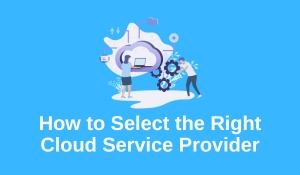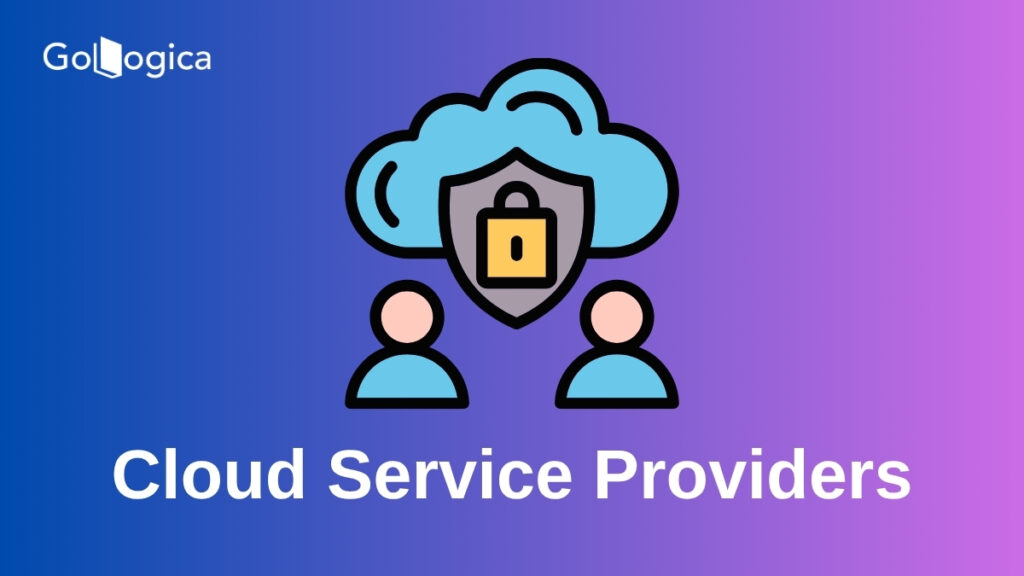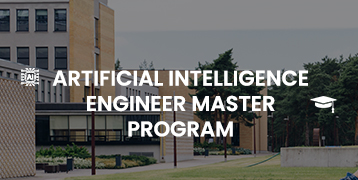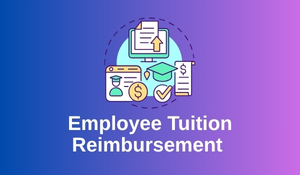
Table of Contents:
Understanding Your Business Needs
Evaluating Cloud Service Offerings
Security and Data Protection
Reliability, Uptime, and Performance
Scalability and Future Growth
Cost Structure and Pricing Models
Integration and Compatibility
Customer Support and Service Quality
Reputation, Financial Health, and Business Stability
Migration Support and Vendor Lock-In
Compliance, Governance, and Auditability
Innovation and Future-Readiness
Making the Final Decision
Understanding Your Business Needs
You should set your company requirements before deciding on a cloud service provider. Check your current IT setup and decide which parts of your environment would suit the cloud. Determine whether your major aims are to make systems more scalable, save money, keep information safe or make remote work easier. Ensure key individuals from many areas are involved, as this will bring variety to ideas and ensure the solution is designed to match company goals. Always consider that your provider should follow important compliance standards such as GDPR or HIPAA, if needed. Also, think about whether the provider can continue to grow as your business starts to require more features. If you know what your business requires, you’ll be able to find the right provider that helps your organization succeed with security, good performance, and good value.

Evaluating Cloud Service Offerings
To make a good choice when picking a cloud service provider, you need to first know what types of cloud services exist. With Infrastructure as a Service (IaaS), users can access server, storage, and networking resources over the internet, allowing them to design and manage their infrastructure as they wish. With Platform as a Service (PaaS), developers can build, test and deploy their applications without managing the underlying infrastructure, although they are limited by the platform’s rules. Using SaaS, software is supplied and managed by the provider, allowing users only minor chances to tailor it for their own needs.
The ability to customize and be flexible is highly different among these models. With IaaS, businesses have the greatest freedom to adapt resources to their needs and in PaaS, enterprises can work out some application development customization. SaaS is not as flexible as other cloud solutions, but it is quick to set up and easy to use which is why some organizations choose it.
Security and Data Protection
Security and protection of your data must be strong when looking for a cloud service provider. Key parts of strong security are knowing about the shared responsibility model, using multi-factor authentication, applying the least privilege rule for user access and carrying out frequent security checks to pinpoint vulnerabilities Both data encryption at rest and data in motion help secure sensitive information by preventing unauthorized access.
Soc 2, ISO 27001 and following standards like GDPR or HIPAA show that a provider meets all required rules and recommendations. Preventive steps like continuous monitoring, testing and automated checking help guarantee your cloud setup is always safe and meets both legal and business criteria.
Reliability, Uptime, and Performance
The key things to consider while choosing a cloud are its reliability, up-time and performance since these factors influence how your business runs. SLAs are written pledges given by providers about how good the service will be, often described by uptime numbers (also known as “nines”). Compared to, for example, a 99.99% SLA, a 99.9% one allows for a much higher amount of downtime—about 42 minutes every month. Even so, evaluating how service providers respond to sudden problems and how fast they fix them is important.
Looking at how often the provider is available and how well it supports users is very important. Commonly used indicators are Mean Time between Failures (MTBF), showing the average uptime between outages and Mean Time to Repair (MTTR) which marks how long issues take to be fixed. A record of high uptime, a long history of being dependable and regular sharing of data points on performance guarantee your cloud infrastructure will keep up with your business demands.
Scalability and Future Growth
Being able to grow as needed is among the biggest benefits of cloud computing that makes it attractive to businesses. Applications hosted on the cloud can deal with sudden traffic spikes or business growth because cloud platforms use vertical, horizontal or hybrid scaling.
Because auto-scaling is flexible, you can only pay for what you use and grow your business smoothly by introducing new services or moving into new areas.
Because they can scale their cloud resources as they need, firms can quickly adopt, experiment with and deploy applications. Strong scalability guarantees that a business remains strong, cost-effective and able to adjust for continued growth in a competitive market.
Cost Structure and Pricing Models
Knowing the budget and pricing systems of cloud service providers helps with planning and avoiding costs you don’t know about. Leading services such as AWS, Azure and Google Cloud provide several options for billing such as pay-as-you-go (on-demand) or reserved, spot and savings plans. If you use resources little by little, pay-as-you-go works best, but reserved and savings plans offer deeper savings if you work with the same load weekly or monthly over a while. Still, extra fees might come up because of data usage, data storage or some resources remaining unused, making it necessary to examine all the details.
For controlling expenses, most services give you the ability to forecast, monitor and make the most of your cloud investment with cost management tools and pricing calculators. They reveal idle resources, notify you if you go over budget and show how much you are using, helping you use the cloud as efficiently as possible.
GoLogica gives its learners the resources to plan, create, and maintain safe and flexible solutions on the Amazon Web Services platform. By doing this program, you can prepare for the AWS Solutions Architect certification through both lab work and scenarios based on real cases.
Integration and Compatibility
Linking cloud services smoothly with what you already have in place is very important for successful adoption. Well-integrated cloud solutions mean that information can pass smoothly between both data centers and regular company systems. Before merging, companies should check their current equipment, software and how their data is shared to find things that could slow down the process. After this foundation is set, it’s easier to move data, further protect the system and increase system efficiency.
APIs (Application Programming Interfaces) help different systems exchange information, so that cloud platforms are able to interact with existing apps and additional services. Middleware makes it easier by handling data transfer and allowing applications to run on different platforms. Cloud integration tools such as Boomi, IBM App Connect and Zapier provide excellent assistance with connecting many apps, automating routines and keeping data consistent throughout different systems.
Integrating the pieces successfully increases work speed and self-adaptation while preparing your IT for future changes.
Customer Support and Service Quality
Putting in place strong customer support and high service quality makes the cloud services experience more valuable. Being able to contact a support service at any time and getting quick solutions matters for both customers and the Business. Quick and efficient answers to issues show you that the provider is in control of your cloud and help you trust them more.
The service improves when backed by a thorough knowledge base and good technical resources. With these resources, users are equipped to manage common problems themselves and discover effective ways to work which reduces their need for direct help and improves how they work. And with frequent checks of support KPIs, like respecting SLAs and customer satisfaction, it is possible to improve and be open about support. Good cloud experiences always depend on quality support and simple access to technical information.
Reputation, Financial Health, and Business Stability
A cloud service provider’s reputation and financial state are important signs of how dependable they will be in the future. Where a provider has performed well and its ranking in the market shows that it is capable of delivering good services all the time. By 2025, Amazon Web Services (AWS), Microsoft Azure and Google Cloud will lead the global market, owning more than half of it together. AWS has the largest market share at 29–32%, Microsoft Azure comes next at 21–23% and Google Cloud has 12%. Because of their continued leadership, customers see that they can rely on Synapse for trusted and innovative services.
A company must be financially stable and also have a long history. They are all doing well, reporting strong sales and ongoing progress; AWS and Microsoft in particular reached new heights, expanding worldwide. The sustained presence and ongoing technology investment lead to them supporting clients as their needs change and helping them face market movements. Having a good reputation and stable finances helps protect your company from risks and supports your cloud long-term plans.
Migration Support and Vendor Lock-In
Ensuring cloud migration goes smoothly and important, as well as avoiding being dependent on a single vendor. Organizations that can provide quality migration support do assessments, create diagrams of software dependencies and work step by step in onboarding clients, helping with a quick and efficient transition. Using AWS Migration Hub or Azure Migrate and other tools, you can list your assets, control dependencies and move your systems more easily.
After onboarding, setting up backup strategies prevents your business from being reliant on one service provider only. Customers must make certain their data can be saved and taken from the platform in easy-to-use formats and that they are familiar with the contract terms for moving their data and apps. The use of open standards, solid APIs and the ability to work on multiple clouds by providers can prevent you from getting locked in and make changing platforms easier for the business. Organizations can keep their freedom and control by focusing on migration help and making sure their data is portable.
Compliance, Governance, and Auditability
Meeting compliance in the cloud requires following standard industry rules which ensure that all parties are complying with regulations. Some main guidelines are HIPAA for healthcare information, SOC 2 for safeguard controls and GDPR, CCPA and PCI DSS for handling customer and financial privacy. They also earn certifications like ISO 27001, ISO 27017 and ISO 27018 which verify they manage information security well and look after the privacy of personal data. Healthcare providers with these certifications get their compliance and security checked by outside auditors.
Methods like consistent auditing and reporting make governance better in cloud environments. Organizations need to do a thorough risk assessment, keep an eye on compliance and go over their cloud service contracts regularly to follow new rules. Audits carried out regularly help identify any weaknesses, check that everything is being done according to the controls and supply important information required for official and internal reporting, all supporting a safe and compliant cloud platform.
Innovation and Future-Readiness
Being committed to technological progress matters to firms aiming for longevity and agility. By 2025, the main cloud platforms AWS, Microsoft Azure and Google Cloud are pushing innovation by uniting artificial intelligence (AI), machine learning (ML) and advanced analytics. Cloud service providers are always updating their services, giving businesses AWS SageMaker, Azure Cognitive Services and Google Vertex AI to help them automate tasks, make decisions and remain ahead of other companies.
Big tech firms consistently offer roadmaps for upcoming updates and new services, providing updates that follow current trends and what customers look for. In this case, AWS is famous for swiftly bringing applications online and reaching many users worldwide, Google Cloud is advanced in AI and quick links and Azure is especially suited for putting together large companies’ IT and supporting hybrid cloud approaches. Innovation in the cloud means that users can capitalize on quantum computing, serverless infrastructures and data analytics which help them remain ready for changes and keep transforming.
GoLogica offers a comprehensive Artificial Intelligence Training covering essential modules like Python, machine learning, deep learning with TensorFlow, and data science, providing students with both foundational knowledge and practical experience in AI technologies.
Making the Final Decision
A formal comparison process should be used when choosing a cloud service provider and checking if it fulfills your organization’s needs. Check whether each provider can handle your main requirements such as how fast it is, how much it can grow, how safe it will be, if it meets regulations, is easily understood financially and how easy it is to use together with your other systems. On popular platforms like AWS, Azure and Google Cloud, AWS is the leader in several services and has a global presence, Azure is best at bringing cloud systems to businesses and Google Cloud tops analytics and AI/ML.
Apart from checking technical characteristics, make sure the provider’s helpdesk, managed services and vision match your business’s future direction. Check fee structures and make sure the provider is transparent about charges, as well as research their past performance, market standing and secure finances to provide peace of mind in the partnership.
Studying examples and reviewing case studies is very important. Go online to find customer reviews, read independent ratings and consider the GoLogica helpful real-life examples to see how various providers respond in situations you might have. You can see the benefits, disadvantages and what services play a role in your work by studying these notes, helping you choose the best solution.










